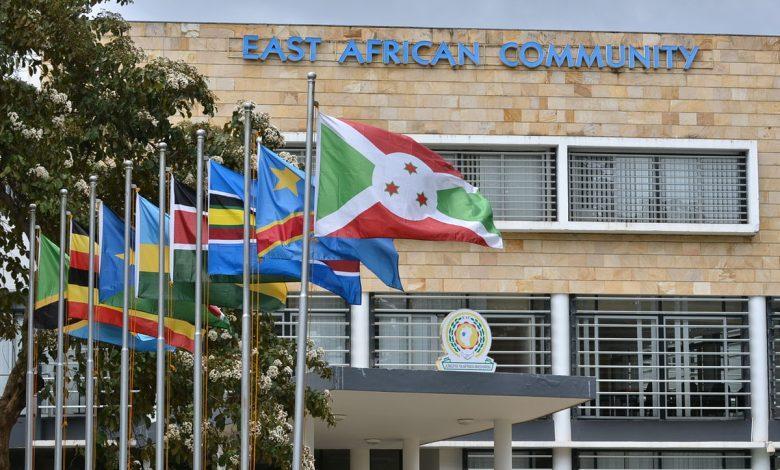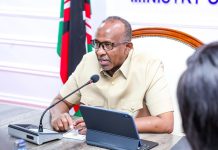Africa-Press – Kenya. THE first quarter of this year has showcased a diverse economic landscape across the East African Community (EAC), with member states experiencing varying growth trajectories.
This period has highlighted both the resilience and challenges faced by these economies as they navigate through shifting global and regional dynamics.
The economic performance of East African Community member states in Q1 reveals a landscape of varied growth patterns.
While Rwanda leads with exceptional growth driven by industry and services, Uganda shows a notable rebound and Tanzania maintains steady expansion with strong sectoral contributions.
Kenya, despite a slight slowdown, remains a significant player in the regional economy. These developments reflect both the opportunities and challenges faced by the EAC as it continues to navigate a complex and evolving economic environment.
Tanzania: Moderate growth with sectoral leadership Tanzania’s economy demonstrated a steady performance, expanding by 5.6 per cent in this year’s Q1, according to the National Bureau of Standard (NBS) statistics.
This marked an improvement over the 5.0 per cent growth recorded in the same quarter of the previous year.
The country’s GDP at current prices rose to 50.8tri/-, up from 46.1tri/- in Q1 last year. Real GDP, adjusted for inflation to constant 2015 prices, increased to 38.7tri/-, reflecting a real growth rate of 5.6 per cent.
The services sector was the standout performer, contributing 39.9 per cent to GDP, followed closely by the Primary sector at 38.3 per cent.
The Intermediate sector accounted for 21.8 per cent of the GDP.
Among specific sectors, Finance and Insurance led with an impressive growth rate of 17.1 per cent, signaling robust activity in financial services.
Other sectors such as electricity, transport and storage also showed healthy growth, reflecting Tanzania’s broad-based economic expansion.
Kenya’s economy grew by 5.0 per cent in Q1, a slight decrease from the 5.1 per cent growth observed in the final quarter of last year.
This figure is also lower than the 5.5 per cent growth recorded in Q1 2023, marking the lowest growth rate since Q3 2023.
A report published by the Kenya National Bureau of Statistics (KNBS) show all the sectors, save for finance and insurance activities, recorded slower growth in the first three months of this year.
ALSO READ: Somalia becomes full member of East African Community
The main contributor to Kenyan GDP remains to be the agriculture, fishing and forestry sector which grew by 6.1 per cent in Q1, lower than the 6.4 per cent expansion recorded in Q1 last year.
Analysts attribute the marginal decline to higher base effects from the previous year, suggesting that while Kenya’s economy remains robust, it faces challenges in maintaining its growth momentum.
Despite this slowdown, Kenya’s diverse economic base continues to support steady growth.
Sectors such as agriculture, manufacturing and services have contributed to the overall economic performance, though the slower pace of expansion could indicate underlying issues that need addressing to sustain future growth.
Uganda: accelerated growth driven by industry
Uganda’s economic growth surged to 6.6 per cent in Q1 of this year, a significant increase from the 5.5 per cent growth in the previous quarter and a remarkable improvement from the 2.1 per cent recorded in Q1 last year.
This acceleration is attributed to strong performances in both the industry and services sectors.
The growth in these sectors underscores Uganda’s ongoing economic recovery and resilience, positioning it as one of the more dynamic economies in the region.
The notable rebound in Uganda’s growth reflects effective economic policies and increased investment in key sectors, which have bolstered industrial output and service delivery.
This positive trend highlights Uganda’s potential for continued economic advancement.
Rwanda: Exceptional growth fueled by industry, services
Rwanda’s economy achieved a remarkable growth rate of 9.7 per cent in Q1 this year, driven primarily by the strong performance of its industry and services sectors.
This exceptional expansion underscores Rwanda’s strategic focus on enhancing industrial capabilities and expanding its service sector.
The significant growth rate reflects Rwanda’s successful efforts in economic diversification and infrastructure development.
The robust performance in these sectors highlights Rwanda’s position as a leading growth performer in the region.
The country’s continued investment in economic development initiatives is expected to further support its dynamic growth trajectory.
For More News And Analysis About Kenya Follow Africa-Press






